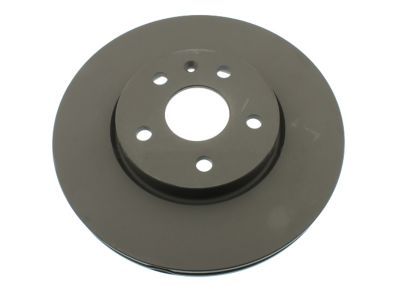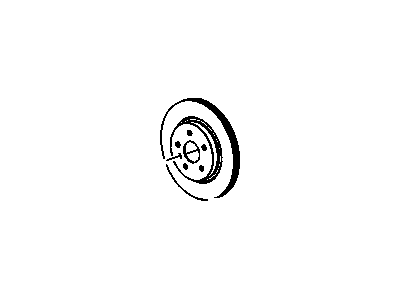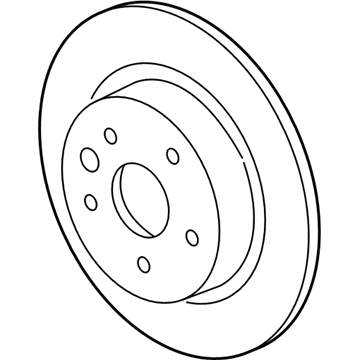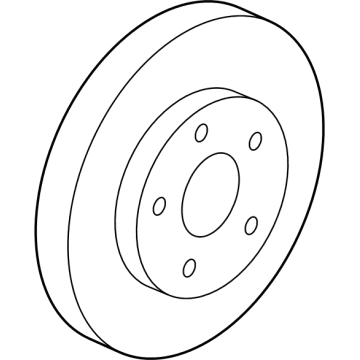
My Garage
My Account
Cart
Genuine GMC Terrain Brake Disc
Disc Rotor- Select Vehicle by Model
- Select Vehicle by VIN
Select Vehicle by Model
orMake
Model
Year
Select Vehicle by VIN
For the most accurate results, select vehicle by your VIN (Vehicle Identification Number).
5 Brake Discs found
GMC Terrain Front Brake Rotor
Part Number: 23118055$116.54 MSRP: $227.17You Save: $110.63 (49%)Ships in 1-3 Business DaysGMC Terrain Rotor, Rear Brk (Ctd)
Part Number: 13544245$73.42 MSRP: $143.11You Save: $69.69 (49%)Ships in 1 Business DayGMC Terrain ROTOR-FRT BRK (CTD)
Part Number: 13552823$84.57 MSRP: $163.04You Save: $78.47 (49%)Ships in 1-2 Business DaysGMC Terrain Rear Brake Rotor
Part Number: 20792027$191.22 MSRP: $376.04You Save: $184.82 (50%)Ships in 1-2 Business Days
GMC Terrain Brake Disc
The Brake Disc of GMC Terrain is used to create the friction surface on which brake pad operates so as to slow or stop the vehicle. The rotor is attached to the axle or the hub and revolves with the wheel; when a brake is applied, hydraulic pressure brings the caliper into contact with the pads and the rotor. This design enables easy heat transfer on heated disks and in particular the vented rotors with the cooling fins. GMC Terrain vehicles have over the years employed different types of Brake Discs, including the solid and the vented brake rotors. Solid rotors can be distinguished in more economical and, as a rule, non-repairs, whereas ventilated rotors act in the front for better cooling. These rotors are usually of cast iron with some composites although the majority are composed of iron cast. Daily and weekly checks are important because problems such as scoring, warping and excess runout can develop and affect the ability of rotors to stop the vehicle safely, in which case rotors may have to be changed.
Each OEM GMC Terrain Brake Disc we offer is competitively priced and comes with the assurance of the manufacturer's warranty for the part. Furthermore, we guarantee the speedy delivery of your orders right to your doorstep. Our hassle-free return policy is also in place for your peace of mind.
GMC Terrain Brake Disc Parts Questions & Experts Answers
- Q: How to inspect the brake disc on GMC Terrain?A:Before you remove the wheel, first loosen the wheel lug nuts, lift the vehicle, and use jackstands to hold it stable while you work. Keep the brake caliper hanging, but maintain the hose connection. Tie the caliper up with some wire to protect the hose from strain. Match and tighten the three inverted lug nuts to keep the disc in place and contact the hub. Add washers to achieve the best fit. Look at the brake disc surface to see if there are scratches, cracks, or other trouble spots. Small surface scratches are fine, but deep damage marks or cracks may mean you need to fix or replace the disc. When you press the brake pedal after fixing the disc, look for any vibration or kicking back. If you feel the disc move during that time, it could mean the disc isn't turning straight, resulting in shaky brake pedal action and grinding Brake Pad sounds. Use the disc-dial to check for runout: put the dial just 1/2-inch from the disc edge (set at zero), and when the readings go over 0.003 inches, the disc needs refreshing or changing. Before grinding, make sure you keep the disc at or above its minimum refinish thickness, found on the disc. Also check its thickness with a micrometer. Make sure to clean all bolts and holes in the caliper mounting bracket. Then apply strong thread-locking glue when reinstalling. Pinpoint where the disc fits on the hub, take out the bolt holding it, and when the bolt won't budge, hit it with a mallet to ease it out. Before using the brake disc, scrub both the hub attachment flange and disc's interior surface with a cleaning tool. After aligning the disc with the hub parts, tighten the bolt that holds them together. Fix the caliper mount bracket securely, according to the desired torque, before putting the caliper over the disc. After that, tighten the installation bolts to their recommended torque value. To finish, put on the tire, pull down your car, tighten the wheel nuts to the right force, and press your brake pedal many times to allow the brake pads to touch the disc. Make sure all brake operations are working correctly before driving as normal.















